|
| Author | Message |
|---|
The Omnipedia
Shincleff, the True Grimoire :: The Legend; Herald of the Veritas
Posts : 3563
Join date : 2014-11-04
 |  Subject: Re: Aethereal List Subject: Re: Aethereal List  Tue Nov 16, 2021 5:51 pm Tue Nov 16, 2021 5:51 pm | |
| Water Spout  | |
|   | | The Omnipedia
Shincleff, the True Grimoire :: The Legend; Herald of the Veritas
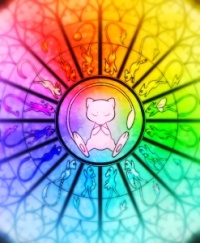
Posts : 3563
 Points : 5028 Points : 5028
Reputation : 0
Join date : 2014-11-04
 |  Subject: Re: Aethereal List Subject: Re: Aethereal List  Tue Nov 16, 2021 5:56 pm Tue Nov 16, 2021 5:56 pm | |
| Ghost Puppy  | |
|   | | The Omnipedia
Shincleff, the True Grimoire :: The Legend; Herald of the Veritas

Posts : 3563
 Points : 5028 Points : 5028
Reputation : 0
Join date : 2014-11-04
 |  Subject: Re: Aethereal List Subject: Re: Aethereal List  Tue Nov 16, 2021 5:57 pm Tue Nov 16, 2021 5:57 pm | |
| Ember  Furaribi Furaribiふらり火 ふらりび Translation: aimless fire Alternate names: buraribi, sayuribi Habitat: riverbanks Diet: none Appearance: Furaribi is a small, flying creature wreathed in flames. It appears late at night near riverbanks. It has the body of a bird, and its face is somewhat dog-like. It is a type of hi-no-tama, or fireball yokai. It does very little except for float about aimlessly, which is how it got its name. Origin: Furaribi are created from the remains of a soul which has not properly passed on to the next life. This is most often due to not receiving proper ceremonial services after dying. In Japan there are a number of important ceremonies performed at fixed intervals which occur for many years after someone’s death — missing even one of these could cause a soul to become lost and be unable to rest. Furaru-bi is one of these lost souls. Legends: In the late 16th century, Toyama was ruled by a samurai named Sassa Narimasa. Narimasa kept a very beautiful concubine named Sayuri in his household. Sayuri was not well liked by the female servants and other women in Sassa Narimasa’s household. They were jealous of her beauty and of Narimasa’s love for her. One day, these women conspired against Sayuri and started a rumor that she had been unfaithful to Narimasa with one of his own men. Narimasa flew in a fit of jealous rage, murdered Sayuri, then took her body down to the Jinzū river. He hung her corpse from a tree and proceeded to carve it into pieces with his sword. Then he captured Sayuri’s entire extended family — 18 people in all — and executed them in the same manner. Afterwards, their tortured souls aimlessly wandered the riverbanks every night as furaribi. It is said if you go down to the riverside and call out, “Sayuri, Sayuri!” late at night, the floating, severed head of a woman will appear, pulling and tearing at her hair in a vengeful fury. As for Sassa Narimasa, he was later defeated by Toyotomi Hideyoshi. Some have attributed his defeat by Hideyoshi to the vengeful curse of Sayuri’s ghost. Nojukubi 野宿火 のじゅくび Translation: wilderness inhabiting fire Habitat: rural roads, mountain paths, and abandoned campsites Appearance: Just as a campfire leaves behind embers which smolder and glow long after the fire has died, human activity can leave behind “embers”—lingering traces of energy which remain for some time after an event has taken place. Nojukubi is a mysterious fire which ignites and extinguishes on its own. It appears most often in the spring just after the season of cherry blossom viewing parties, or in the fall after the season of fall foliage viewing parties. It is most commonly found on roadsides or in the mountains, along routes where people go on excursions or hikes. It takes the form of a thin streak of flame which appears out of nowhere. Behavior: Nojukubi is most commonly found in wilderness areas from which humans have recently left. These bizarre fires flare up suddenly, seemingly out of nowhere, and just as quickly extinguish for no reason, even when they appear to be burning strong. They reignite and extinguish themselves over and over. Nojukubi exhibits a number of strange qualities which distinguish it from ordinary campfires. It appears more frequently just after it stops raining, unhindered by the dampness. It does not give off any heat. It does not consume wood or kindling as it burns, and it does not spread like a normal fire does. Perhaps strangest of all, witnesses of nojukubi report that human voices can be heard having conversations or reciting poetry and songs from within the flames—remnants of the lively activity which took place earlier. Origin: Nojukubi appears in the Edo Period yokai collection Ehon hyakumonogatari, where it is noted as being a phenomenon separate from kitsunebi or Sōgenbi. Other sources describe it as a type of onibi. Cinnamonpuff 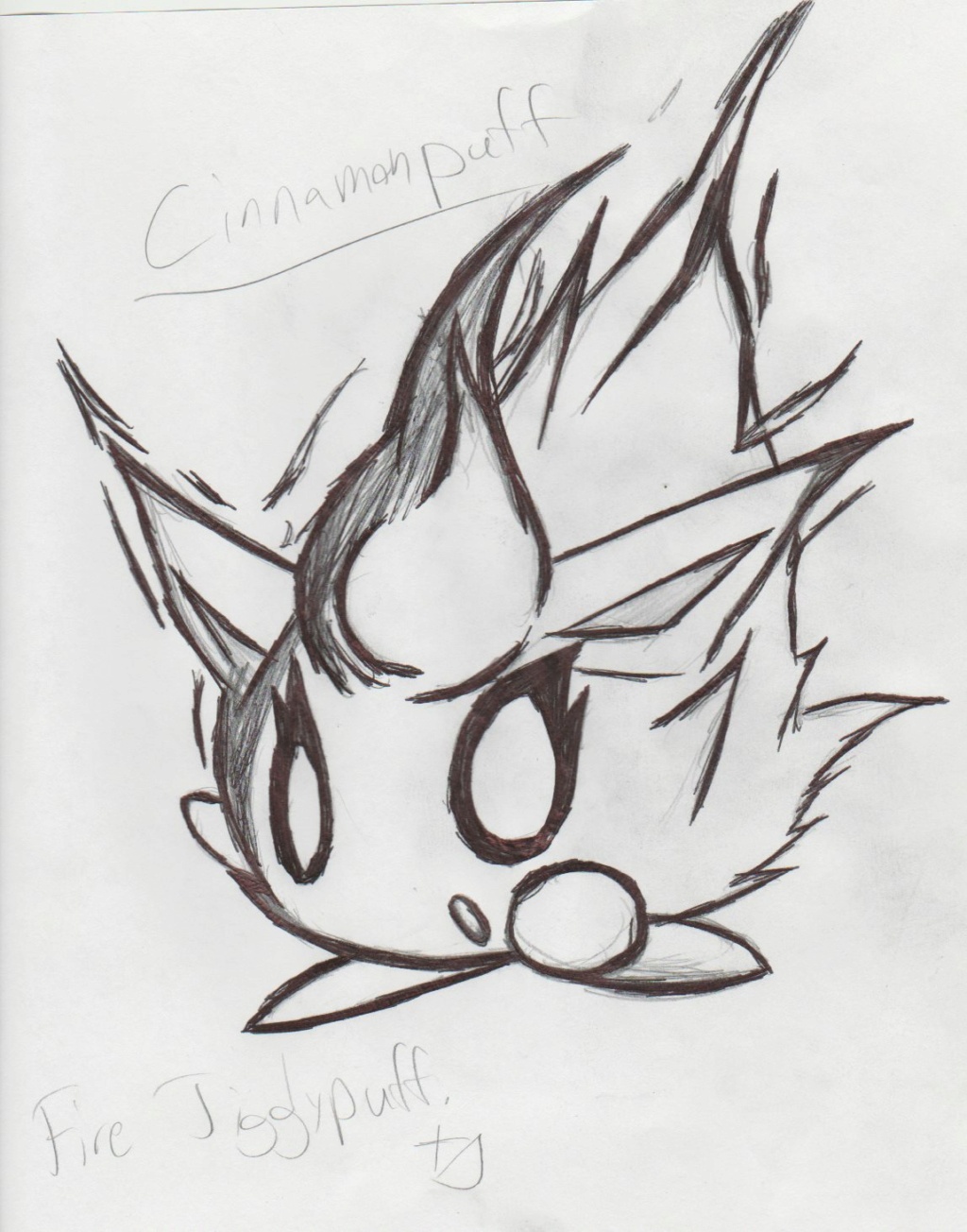 | |
|   | | The Omnipedia
Shincleff, the True Grimoire :: The Legend; Herald of the Veritas

Posts : 3563
 Points : 5028 Points : 5028
Reputation : 0
Join date : 2014-11-04
 |  Subject: Re: Aethereal List Subject: Re: Aethereal List  Tue Nov 16, 2021 8:08 pm Tue Nov 16, 2021 8:08 pm | |
| Formless  *Whiteface is a type of Formless. | |
|   | | The Omnipedia
Shincleff, the True Grimoire :: The Legend; Herald of the Veritas

Posts : 3563
 Points : 5028 Points : 5028
Reputation : 0
Join date : 2014-11-04
 |  Subject: Re: Aethereal List Subject: Re: Aethereal List  Tue Nov 16, 2021 8:09 pm Tue Nov 16, 2021 8:09 pm | |
| Firespine  | |
|   | | The Omnipedia
Shincleff, the True Grimoire :: The Legend; Herald of the Veritas

Posts : 3563
 Points : 5028 Points : 5028
Reputation : 0
Join date : 2014-11-04
 |  Subject: Re: Aethereal List Subject: Re: Aethereal List  Tue Nov 16, 2021 8:12 pm Tue Nov 16, 2021 8:12 pm | |
| Dengerio 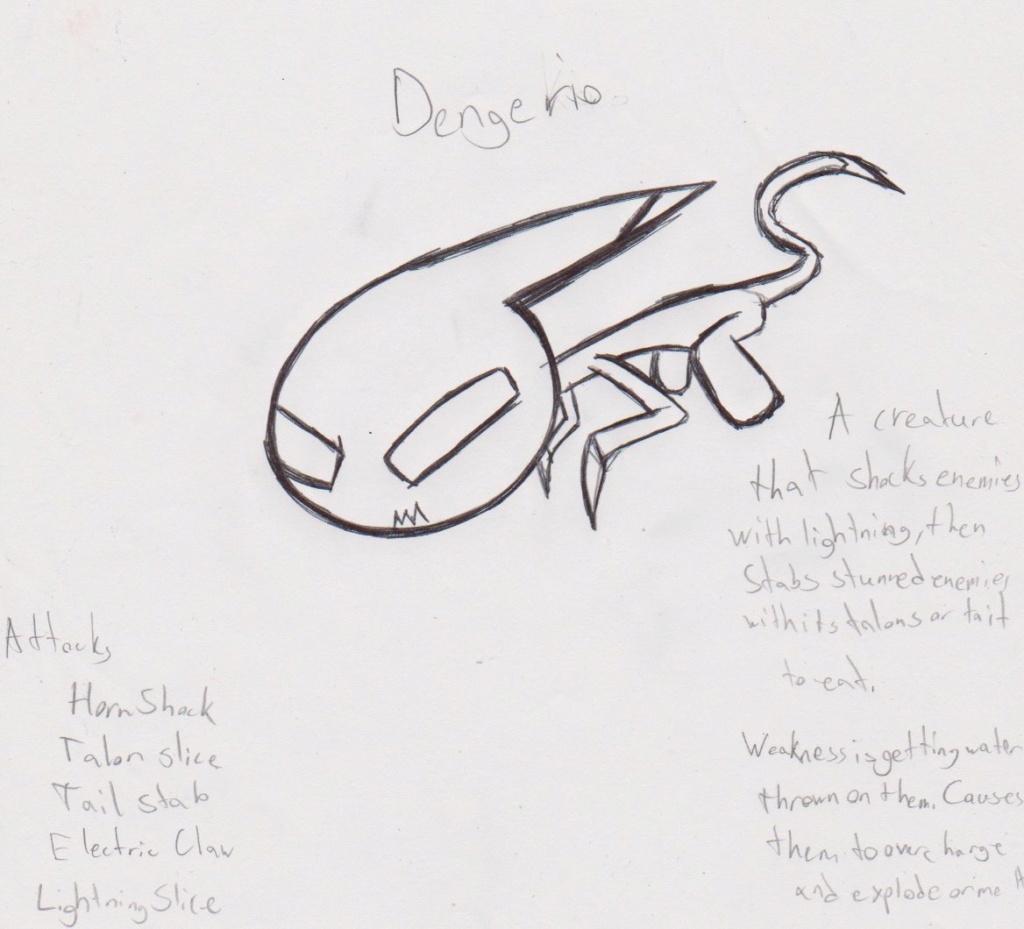 | |
|   | | The Omnipedia
Shincleff, the True Grimoire :: The Legend; Herald of the Veritas

Posts : 3563
 Points : 5028 Points : 5028
Reputation : 0
Join date : 2014-11-04
 |  Subject: Re: Aethereal List Subject: Re: Aethereal List  Tue Nov 16, 2021 8:47 pm Tue Nov 16, 2021 8:47 pm | |
| Black Hood 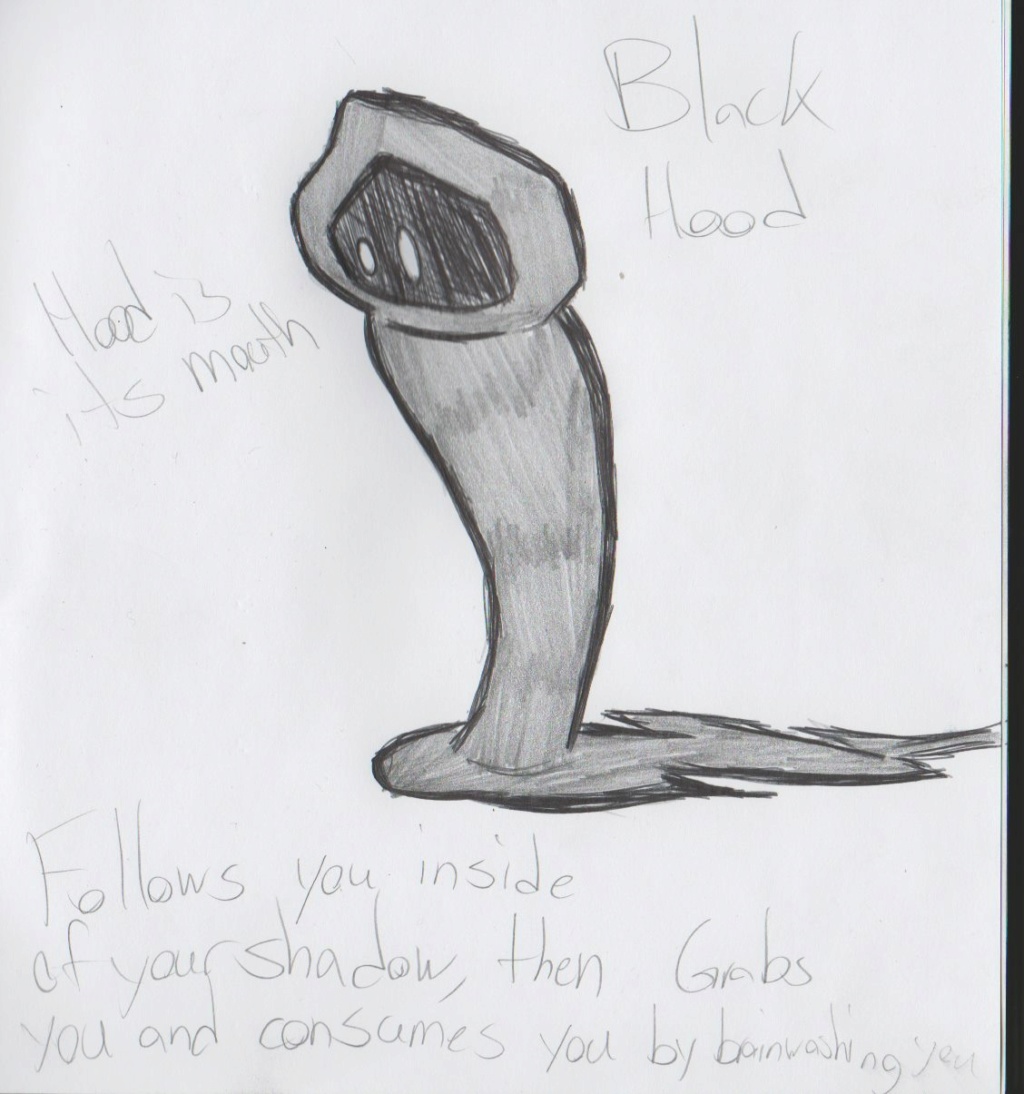 | |
|   | | The Omnipedia
Shincleff, the True Grimoire :: The Legend; Herald of the Veritas

Posts : 3563
 Points : 5028 Points : 5028
Reputation : 0
Join date : 2014-11-04
 |  Subject: Re: Aethereal List Subject: Re: Aethereal List  Wed Nov 17, 2021 7:10 am Wed Nov 17, 2021 7:10 am | |
| Possessed Spirit   Oi no bakemono 笈の化け物 おいのばけもの Translation: backpack monster Habitat: homes and temples where pilgrims might stay Appearance: Oi no bakemono are tsukumogami—artifact spirits—which haunt wooden backpacks known as oi. An oi which has been used for a very long time may transform into this bird-like yōkai. They sproud heads with long, black hair, and three-toed avian feet Their carry a broken sword blade in their mouths, resembling a bird’s pointed beak. They can breathe fire. Origin: Oi are special backpacks which are carried on long journeys by itinerant Buddhist monks, pilgrims, and yamabushi (mountain ascetics who practice Shugendō). They contain Buddhist religious implements, clothing, tableware, and other necessities for their journeys. Oi no bakemono appears in the book Ehon musha bikō, where one is said to have appeared in the bedroom of Ashikaga Tadayoshi—a general and government administrator during the 14th century. Tadayoshi helped his brother Tadauji to establish the Ashikaga shogunate, which ruled Japan for over 200 years. | |
|   | | The Omnipedia
Shincleff, the True Grimoire :: The Legend; Herald of the Veritas

Posts : 3563
 Points : 5028 Points : 5028
Reputation : 0
Join date : 2014-11-04
 |  Subject: Re: Aethereal List Subject: Re: Aethereal List  Wed Nov 17, 2021 9:25 am Wed Nov 17, 2021 9:25 am | |
| Ionhead  | |
|   | | The Omnipedia
Shincleff, the True Grimoire :: The Legend; Herald of the Veritas

Posts : 3563
 Points : 5028 Points : 5028
Reputation : 0
Join date : 2014-11-04
 |  Subject: Re: Aethereal List Subject: Re: Aethereal List  Wed Nov 17, 2021 9:30 am Wed Nov 17, 2021 9:30 am | |
| Elecricket  | |
|   | | The Omnipedia
Shincleff, the True Grimoire :: The Legend; Herald of the Veritas

Posts : 3563
 Points : 5028 Points : 5028
Reputation : 0
Join date : 2014-11-04
 |  Subject: Re: Aethereal List Subject: Re: Aethereal List  Wed Nov 17, 2021 9:37 am Wed Nov 17, 2021 9:37 am | |
| Fever  | |
|   | | The Omnipedia
Shincleff, the True Grimoire :: The Legend; Herald of the Veritas

Posts : 3563
 Points : 5028 Points : 5028
Reputation : 0
Join date : 2014-11-04
 |  Subject: Re: Aethereal List Subject: Re: Aethereal List  Wed Nov 17, 2021 9:40 am Wed Nov 17, 2021 9:40 am | |
| Ring Of Fire  | |
|   | | The Omnipedia
Shincleff, the True Grimoire :: The Legend; Herald of the Veritas

Posts : 3563
 Points : 5028 Points : 5028
Reputation : 0
Join date : 2014-11-04
 |  Subject: Re: Aethereal List Subject: Re: Aethereal List  Wed Nov 17, 2021 9:50 am Wed Nov 17, 2021 9:50 am | |
| Boobear  | |
|   | | The Omnipedia
Shincleff, the True Grimoire :: The Legend; Herald of the Veritas

Posts : 3563
 Points : 5028 Points : 5028
Reputation : 0
Join date : 2014-11-04
 |  Subject: Re: Aethereal List Subject: Re: Aethereal List  Wed Nov 17, 2021 9:57 am Wed Nov 17, 2021 9:57 am | |
| Foreshadow  | |
|   | | The Omnipedia
Shincleff, the True Grimoire :: The Legend; Herald of the Veritas

Posts : 3563
 Points : 5028 Points : 5028
Reputation : 0
Join date : 2014-11-04
 |  Subject: Re: Aethereal List Subject: Re: Aethereal List  Wed Nov 17, 2021 10:01 am Wed Nov 17, 2021 10:01 am | |
| Smog  Enenra - Spoiler:
Enenra煙々羅
えんえんら
Translation: smokey fabric
Alternate names: enra enra
Habitat: chimneys, bonfires
Diet: combustible materials
Appearance: Enenra is a yōkai made up of wisps of smoke, which rise up into the sky from a fires, such as the takibi bonfires which farmers light to dispose of the remains of their harvests. As the smoke rises, human-like faces appear and disappear in its form.
Behavior: Enenra is essentially just a personification of smoke. It floats about as it climbs into the air, billowing in the wind, and appearing as fragile as a piece of delicate silk dancing in the breeze. It is mesmerizing and relaxing to watch.
Origin: Enenra was invented by Toriyama Sekien for his book Konjaku hyakki shūi. It seems to be loosely based on a passage in Tsurezure gusa which describes the smoke rising from fires burned in the summer to keep mosquitoes away. Contemporary yokai scholars have also pointed out that this yōkai’s name sounds similar to the name Enma, the lord of hell and judge of the dead. As hell is a place of fire and smoke, it has been suggested that instead of the spirit of smoke itself, enenra may actually be the spirits of the dead rising up along with the smoke. For that reason, enenra only appears before those who are calm and pure of heart and mind.
Hangonkō - Spoiler:
反魂香
はんごんこう
Translation: spirit calling incense
Appearance: Hangonkō is a legendary incense from ancient China which has the power to bring forth the spirits of the dead before those who burn it. Those who burn the incense will see the spirits of the dead within the smoke.
Origin: Hangonkō is made from the hangonjū, a magical tree with leaves and flowers that resemble those of a maple or Japanese oak. Its smell can be picked up from over 100 ri away. To make hangonkō, you steam the hangonjū’s roots until the sap comes out. Then you knead the sap to make the incense. Even a small piece of this resin is strong enough to recall the spirits of those who died from sickness or disease. There is a catch, however. Hangonkō only returns the spirit for a short time, and they only exist within the smoke of the burning incense.
Legends: The incense was famously used by Emperor Wu of the Han dynasty in China. After his beloved concubine Li Furen passed away, the emperor fell into deep depression. A Taoist sorcerer, in an attempt to ease the emperor’s grief, provided him with a bit of hangonkō so that he might see Lady Li one more time.
Hangonkō was a popular subject in Japanese literature as well. It appears in a number of Edo period works, from ghost story books to theater, kabuki, rakugo, and bunraku. The Japanese versions star different characters connected to famous Japanese figures; for example in one story a man is overcome with grief at the death of his beloved prostitute, and a hōkan—a male geisha—recommends he try summon her using a secret incense handed down by the onmyōji Abe no Seimei.
All of the variations of the story share the same moral: after the person uses the incense to meet their lover’s spirit, it only leaves them sadder and more grieved than they were before. Hangonkō doesn’t alleviate their loneliness, it makes it worse. This story is an allegory. Smoke can be a symbol of delusion, such as attachment to the material world, or the inability to let go of a loved one after death. In Buddhism, this delusion is the ultimate cause of all suffering. The smoke of this incense prevents people from properly letting go of their loved ones and moving on. They’re stuck in the past, in a delusion, and will be forever miserable unless they learn to let go.
| |
|   | | The Omnipedia
Shincleff, the True Grimoire :: The Legend; Herald of the Veritas

Posts : 3563
 Points : 5028 Points : 5028
Reputation : 0
Join date : 2014-11-04
 |  Subject: Re: Aethereal List Subject: Re: Aethereal List  Wed Nov 17, 2021 10:02 am Wed Nov 17, 2021 10:02 am | |
| Breeze  | |
|   | | The Omnipedia
Shincleff, the True Grimoire :: The Legend; Herald of the Veritas

Posts : 3563
 Points : 5028 Points : 5028
Reputation : 0
Join date : 2014-11-04
 |  Subject: Re: Aethereal List Subject: Re: Aethereal List  Wed Nov 17, 2021 10:03 am Wed Nov 17, 2021 10:03 am | |
| Whispering Wind  Ushirogami Ushirogami後神 うしろがみ Translation: behind spirit Habitat: haunts cowardly people Diet: fear Appearance: Ushirogami looks like a ghost with long black hair, and a large single eyeball located on the top of its head. It doesn’t have feet, but instead has a long, twisting body which allows it to leap high into the air. Interactions: An ushirogami’s favorite tactic is to scare people by leaping out and appearing right behind them (thus its name). They like to tug on the hairs on the back of a person’s neck and then vanish just as they turn around to see touched them. Other pranks that ushirogami enjoy include placing their icy cold hands or breathing their hot breath onto the necks of their victims. Ushirogami particularly like going after cowardly young women walking the streets at night. They sneak up behind them and untie their hair, causing it to fall all over the place; or they run their hands through the woman’s hair and mess it around, causing it to become tangled. Sometimes they call up strong gusts of wind to blow umbrellas away. Origin: Ushirogami is thought to be a kind of okubyōgami—a spirit that causes cowardice, or that specifically targets cowardly people. Its name comes from the words ushiro (behind) and kami (spirit). However, there is a hidden pun in its name: ushirogami also means the hair on the back of your neck, and the phrase ushirogami wo hikikaeru (to have the hairs on the back of your neck pulled) means to do something with painful reluctance. It describes a person who has to do something that they really don’t want to do. As they search for some way out of it, they turn around and look behind them as if the hairs in the back of their head were being metaphorically pulled. The pun is that the ushirogami (spirit) is pulling on your ushirogami (hair), causing you to become cowardly and not want to do something. You turn around to see who pulled your hair, but there is no one back there. Thus the ushirogami can be explained as both an external entity which causes fear, or as the internal personification of your own cowardice or reluctance. Uwan うわん Translation: onomatopoeic; named for the sound it makes Habitat: empty temples, abandoned houses Diet: lives off of the fear it causes Appearance: Another monster about which little is known, the uwan is more often heard than seen. It is named for the distinctive sound it makes, crying out from the darkness: “Uwan!” No written record of its physical appearance exists; the creature was thought to be formless for centuries. It wasn’t until the Edo period when artist Sawaki Sūshi gave the creature its shape that uwan were considered anything more than phantom sounds. Interactions: Uwan are occasionally encountered outside of old buildings and temples. They assault lone passersby by leaping out of the shadows and shouting “Uwan!” The uwan depends entirely on the surprise attack—any weak-willed victims who faint at the site of the uwan never regain consciousness. The uwan steals their essence and flees into the darkness. However, if a brave individual shouts back “Uwan!” then this yōkai flees and never bothers that person again. Legends: A famous uwan encounter took place in Akita Prefecture during the Edo period. A young newlywed couple had bought an old mansion and moved in together. On their first night in their new house, they were awoken by a loud voice shouting “UWAN!” The shocked couple searched all over and around the house, but couldn’t find the source of the voice. The shouting continued for some time, erupting sporadically all night, every night. The couple was not able to sleep at all. Some time later, the couple’s neighbors began to ask why they were always so tired-looking, with blood-shot eyes and disheveled hair. The husband tried to explain about the mysterious voice, but none of his neighbors claimed to have heard the shouting. Of course, nobody in the neighborhood believed the couple. Instead, gossip quickly began to spread that the newlyweds weren’t getting any sleep on account of nocturnal activity of a different kind. Embarrassed, the couple ceased asking about the strange sounds. Yamabiko 山彦 やまびこ Translation: echo; written with characters meaning mountain boy Habitat: forested mountains and valleys, inside camphor tress Diet: unknown Appearance: The wilds of Japan are full of strange phenomena, like echoes that bounce back with more delay than they should, or that come back slightly different from the original sound. When the false echo comes from the forest, it is usually attributed to a kodama. When it comes from the mountains, it is due to something called a yamabiko. They are small, appearing like a cross between a dog and a wild monkey. Yamabiko are known almost exclusively by their voices. They are skilled at mimicking any sound, including natural sounds, human language, and trains and cars. They occasionally unleash terrible and mysterious screams deep in the forests that can carry for long distances. Behavior: Little is known about these yōkai due to their rarity and elusiveness. They live deep in the mountains and make their homes in camphor trees, in close proximity to (and sharing a common ancestry with) other tree and mountain spirits. For many centuries, their calls were speculated to be a kind of rare bird, or other kinds of yōkai, or even natural phenomena. It wasn’t until the Edo period—when determined yōkai researchers like Sawaki Sūshi and Toriyama Sekien began making illustrated yokai bestiaries—that this creature’s form was decided. | |
|   | | The Omnipedia
Shincleff, the True Grimoire :: The Legend; Herald of the Veritas

Posts : 3563
 Points : 5028 Points : 5028
Reputation : 0
Join date : 2014-11-04
 |  Subject: Re: Aethereal List Subject: Re: Aethereal List  Wed Nov 17, 2021 3:14 pm Wed Nov 17, 2021 3:14 pm | |
| Clay Sprite (Fire)  | |
|   | | The Omnipedia
Shincleff, the True Grimoire :: The Legend; Herald of the Veritas

Posts : 3563
 Points : 5028 Points : 5028
Reputation : 0
Join date : 2014-11-04
 |  Subject: Re: Aethereal List Subject: Re: Aethereal List  Wed Nov 17, 2021 3:16 pm Wed Nov 17, 2021 3:16 pm | |
| Sensitivity  | |
|   | | The Omnipedia
Shincleff, the True Grimoire :: The Legend; Herald of the Veritas

Posts : 3563
 Points : 5028 Points : 5028
Reputation : 0
Join date : 2014-11-04
 |  Subject: Re: Aethereal List Subject: Re: Aethereal List  Wed Nov 17, 2021 5:49 pm Wed Nov 17, 2021 5:49 pm | |
| Watursa  | |
|   | | The Omnipedia
Shincleff, the True Grimoire :: The Legend; Herald of the Veritas

Posts : 3563
 Points : 5028 Points : 5028
Reputation : 0
Join date : 2014-11-04
 |  Subject: Re: Aethereal List Subject: Re: Aethereal List  Wed Nov 17, 2021 5:52 pm Wed Nov 17, 2021 5:52 pm | |
| Kaos (Cause) 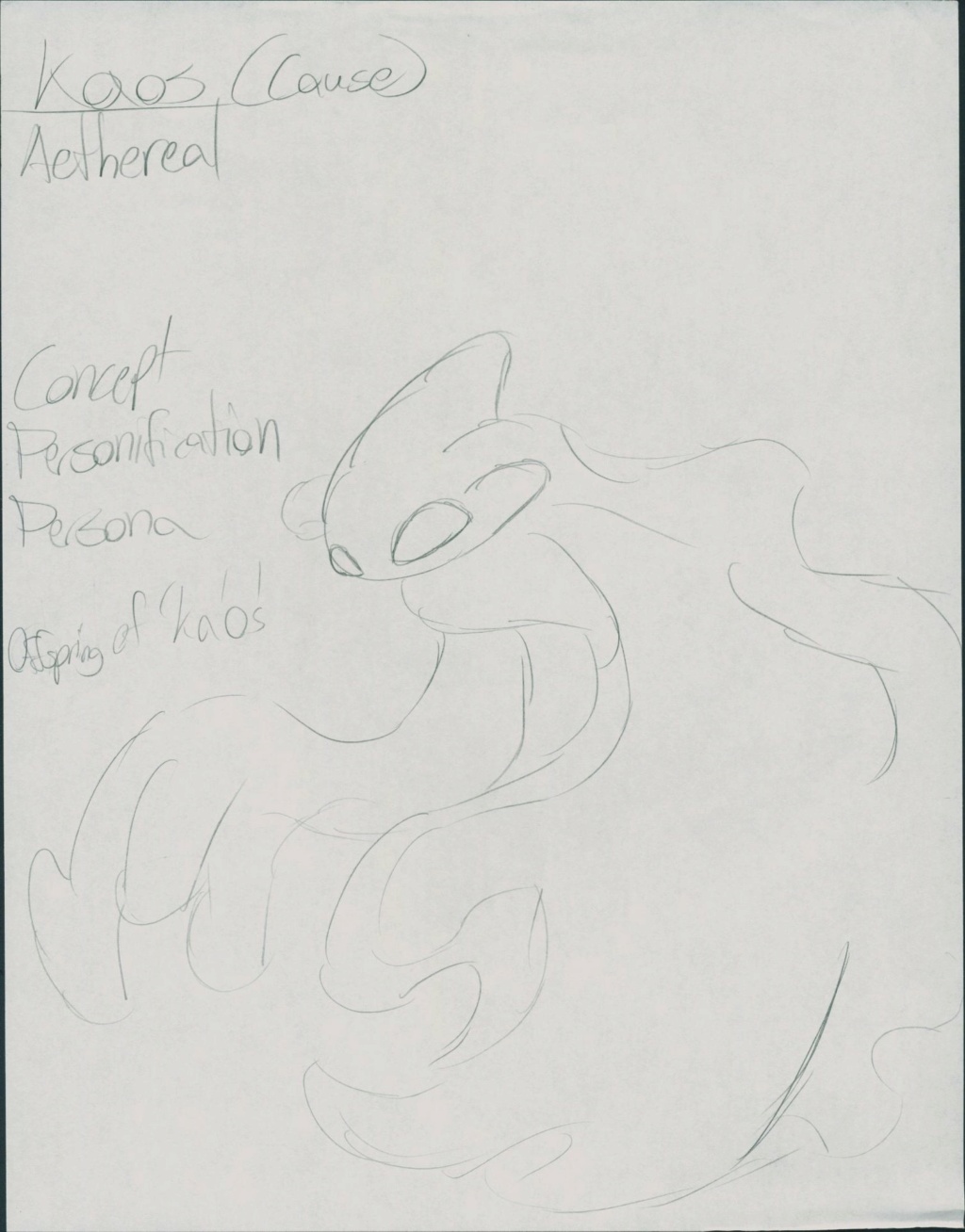 Pure Causality. Flows like water and affects like waves. | |
|   | | The Omnipedia
Shincleff, the True Grimoire :: The Legend; Herald of the Veritas

Posts : 3563
 Points : 5028 Points : 5028
Reputation : 0
Join date : 2014-11-04
 |  Subject: Re: Aethereal List Subject: Re: Aethereal List  Wed Nov 17, 2021 5:54 pm Wed Nov 17, 2021 5:54 pm | |
| Ame  Hikeshi baba - Spoiler:
Hikeshibaba火消婆
ひけしばば
Translation: fire extinguishing old woman
Habitat: human-inhabited areas
Diet: unknown
Appearance: Hikeshi baba takes the form of a white-haired, grotesque-looking, old woman. She wanders from house to house blowing out lanterns.
Interactions: Hikeshi baba is not a dangerous yōkai herself, although her actions can indirectly harm people. Her purpose is to make the world a gloomier place by extinguishing the cheerful, beautiful paper lanterns that decorate Japanese homes. Yōkai, by nature, are not accustomed to bright lights or cheery atmospheres. Her work is intended to make conditions more suitable for other yōkai to come out and do their own misdeeds.
Kosamebō - Spoiler:
Kosamebou小雨坊
こさめぼう
Translation: light rain monk
Habitat: mountain roads
Diet: as a human (likely follows a monk’s diet)
Appearance: Kosamebō are yōkai which look like Buddhist monks. They loiter about on empty mountain roads at night. As their name implies, they only appear during nights when light rain is falling.
Interactions: Kosamebō accost travelers and beg for alms such as spare change or bits of millet to eat. Though frightening—and perhaps a bit annoying—they do not pose any real danger to humans.
Origin: Kosamebō appears in Toriyama Sekien’s yokai encyclopedia Konjaku hyakki shūi. Sekien describes them as appearing on the roads going through Mount Omine and Mount Katsuragi, two holy mountains in Nara Prefecture which have popular pilgrimage trails. They are also part of the local folklore of the Tsugaru region of Aomori Prefecture.
| |
|   | | The Omnipedia
Shincleff, the True Grimoire :: The Legend; Herald of the Veritas

Posts : 3563
 Points : 5028 Points : 5028
Reputation : 0
Join date : 2014-11-04
 |  Subject: Re: Aethereal List Subject: Re: Aethereal List  Wed Nov 17, 2021 5:56 pm Wed Nov 17, 2021 5:56 pm | |
| E.Z.A. 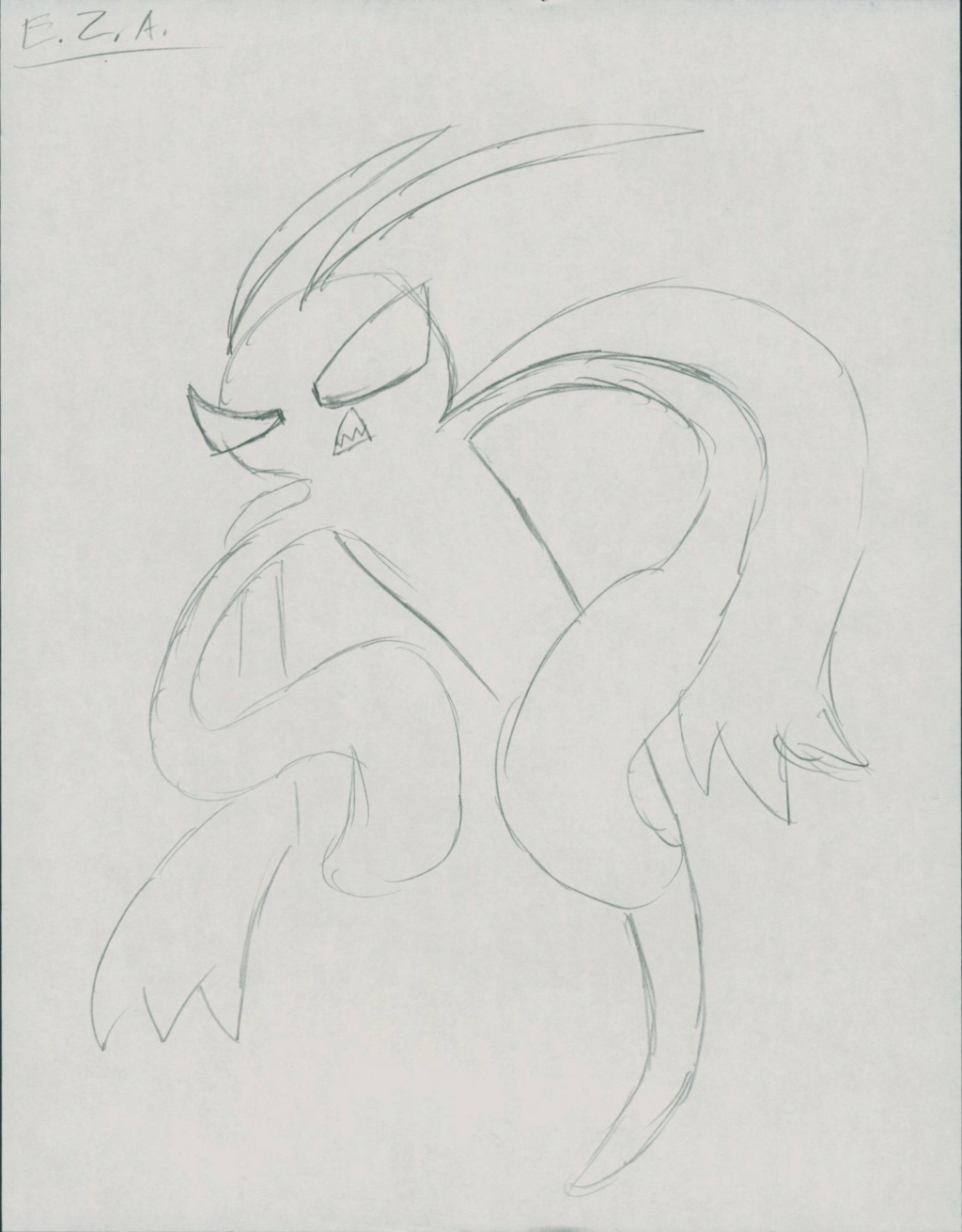 Byproduct of Project 402. | |
|   | | The Omnipedia
Shincleff, the True Grimoire :: The Legend; Herald of the Veritas

Posts : 3563
 Points : 5028 Points : 5028
Reputation : 0
Join date : 2014-11-04
 |  Subject: Re: Aethereal List Subject: Re: Aethereal List  Wed Nov 17, 2021 5:58 pm Wed Nov 17, 2021 5:58 pm | |
| Water Jet  | |
|   | | The Omnipedia
Shincleff, the True Grimoire :: The Legend; Herald of the Veritas

Posts : 3563
 Points : 5028 Points : 5028
Reputation : 0
Join date : 2014-11-04
 |  Subject: Re: Aethereal List Subject: Re: Aethereal List  Wed Nov 17, 2021 6:02 pm Wed Nov 17, 2021 6:02 pm | |
| Jar Head  | |
|   | | The Omnipedia
Shincleff, the True Grimoire :: The Legend; Herald of the Veritas

Posts : 3563
 Points : 5028 Points : 5028
Reputation : 0
Join date : 2014-11-04
 |  Subject: Re: Aethereal List Subject: Re: Aethereal List  Wed Nov 17, 2021 6:03 pm Wed Nov 17, 2021 6:03 pm | |
| Geyser  | |
|   | | Sponsored content
 |  Subject: Re: Aethereal List Subject: Re: Aethereal List  | |
| |
|   | | | | Aethereal List |  |
|
Similar topics |  |
|
| | Permissions in this forum: | You cannot reply to topics in this forum
| |
| |
| |
